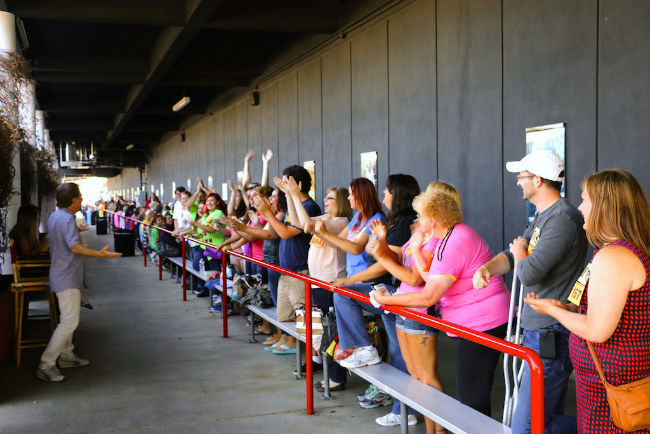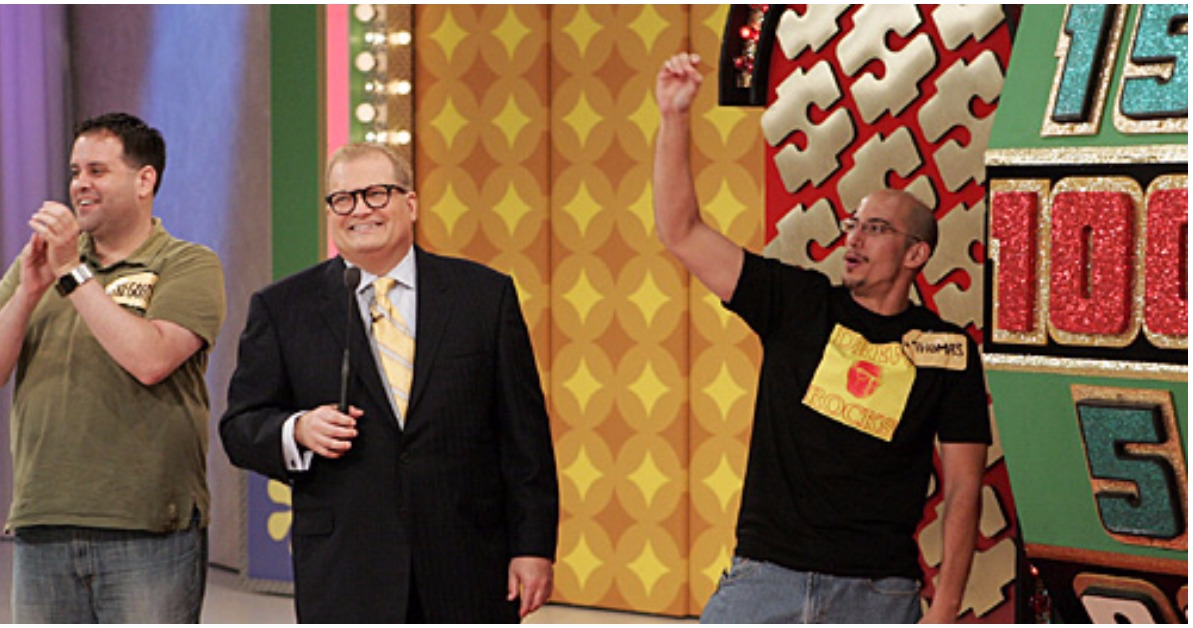We've all seen hundreds of episodes of America's favorite game show, but almost nobody realizes there's a winning strategy for The Price is Right.
Ben Blatt, a Harvard grad with a degree in applied mathematics, managed to crunch the numbers in the show's most popular games and created an all-in-one cheat sheet with tips for how to win. As it turns out there is a science to even the most "random" games like Plinko. We break down how you can avoid the 10 most common Price is Right blunders:
Mistake #1: Not impressing Stan Blits
Who is Stan Blits? He's a longtime production assistant for the game show with a very special job: Stan screens every person in the studio audience, looking for contestants to "come on down" to Contestant's Row, and he alone decides who gets to play.

You could know all the prices by heart and still never get a chance to prove it if you don't impress San Blits while waiting in line. Luckily, Stan has revealed what he's looking for: "energy, sincerity, and potential humor. And if they can equal my energy or exceed it and maintain it, they are at the top of the list."
Mistake #2: Guessing on Contestant's Row
How much is a new barbecue, a vinyl record player and a flat screen TV worth? The odds are whatever number you just thought of was too low. Blatt checked the data on Contestant's Row bids and found they were almost always lower than the actual price.
Whatever they bid, the last person to guess the price has a 35% chance of winning this round. Always try to guess $1 higher than the highest bid so far. If you do this as the last bidder, your odds of winning are an impressive 53%
Mistake #3: Starting from the bottom on the Clock Game
We don't expect you to know the average price of the Clock Game prizes, but Blatt assures us that they're almost always between $500 and $1,000. Your first bid in this "higher or lower" game should be $750, smack-dab in the middle.
If you keep using that technique (for instance, if it was higher than $750 your next guess would be $875, because that's halfway to $1,000) you can normally get the exact price in 10 guesses or less.
Mistake #4: Bidding low on the Cliff Hangers prizes
The aim of this game is to guess the exact price of each of the three prizes, because for every dollar you're off the mark by the mountain climber rises one of the 25 steps. The trick isn't to guess perfectly, but to bet smart to keep the price difference low.
Blatt recommends starting with $19 (which is usually very close to the first prize). Each prize is more expensive than the next, so once the first prize has been revealed bet $11 more (so after a $30 prize, bid $41). Your mountain climber should be safe if you follow this strategy.
Mistake #5: Ending a car price with 95 or 50
One of the most exciting things you can hear while competing on Price is Right is that you'll be bidding on a new car. But many contestants mess up their chance to win their new ride, and host Drew Carey thinks he knows why.
He says that most contestants make the same mistake when they bet on a car: ending their guess in 95 or 50. Here's his reasoning: "Car payments end in 95, 50, and 99. And, when you look in the paper all you see is the payment, you never see the car price. In the ad, you always see the payment, so that's why people say the car has got to be 98 or 95."
Keep reading to learn how to master Plinko and the Big Wheel...
Mistake #6: Guessing anything in the Magic Number game
This is undeniably one of the hardest games on the show. You're given no information other than the fact that one item is cheaper than the other, then asked to guess the Magic Number separating those two prices.
You're basically doomed to lose this guessing game, and contestants only come up with a winning answer 44% of the time. But Blatt says if you bet exactly $2,250 you will win 80% of the time, thanks to the show's tendency to use similar prizes.
Mistake #7: Ranking prizes by price on Pay the Rent
This is another game where Drew has strong opinions, mostly because he sees contestants ruin their chances every time it's featured. The idea is that each level of the house, from the mailbox to the attic, is worth more than the level before it. But Carey says contestants don't see the game that way.
"I have to make sure I explain [Pay the Rent] really clearly. And, it's annoying to me. I always say it's not necessarily least expensive to most expensive," the host explains. "And, [the contestants] always pick the cheapest thing put it in the mailbox and lose $100,000 right away. As soon as they put the cheapest thing in the mailbox, I go they 'lost $100 grand' in my head."
Mistake #8: Dropping to the sides on Plinko
Plinko is considered a game of chance, but in fact there is a little science behind it. Sure, the pegs could send your chip rolling to any spot on the board, but most of the time they lead to the same spot. Researchers who recorded data from the show found that slot E, the fifth from the left, was the most likely to get you $10,000.
Carey has his own tips for fans hoping to win big money from this game: "the dot of the 'i' is off too, if you're looking at it, off to the left just a little bit "” so you want to drop it where the break in the 'N' is on the bottom. You wanna drop it from there, that's in the middle."
Mistake #9: "Under-spinning" the Big Wheel
"To spin or not to spin?" That is the question. It was also the title of a scientific paper on this game which compared hundreds of results to determine the best advice for each player who spins the Big Wheel:
- The first contestant should always spin again if he has 65 cents or less.
- The second contest should always spin again if he's not in the lead, if he has less than 50 cents, or if he's tied at 65 cents.
- The final contestant should always spin if he's not in the lead. if you get in a tie for the lead with more than 50 cents you should not spin again, because your odds will be better in the one-spin tiebreaker.
Mistake #10: Not doing your homework
Yes, we know, it's totally dorky to study for a game show, but it can pay off in a big way. Terry Kniess managed to bid the exact price of his showcase, convincing the show's producers that he was cheating. In fact, Kniess and his wife had been studying the game for months and memorizing the most common prizes.
See how a little math can pay off? Good luck if you ever get to compete on the show!
Share these tips if you love The Price Is Right!
[H/T: Slate]




